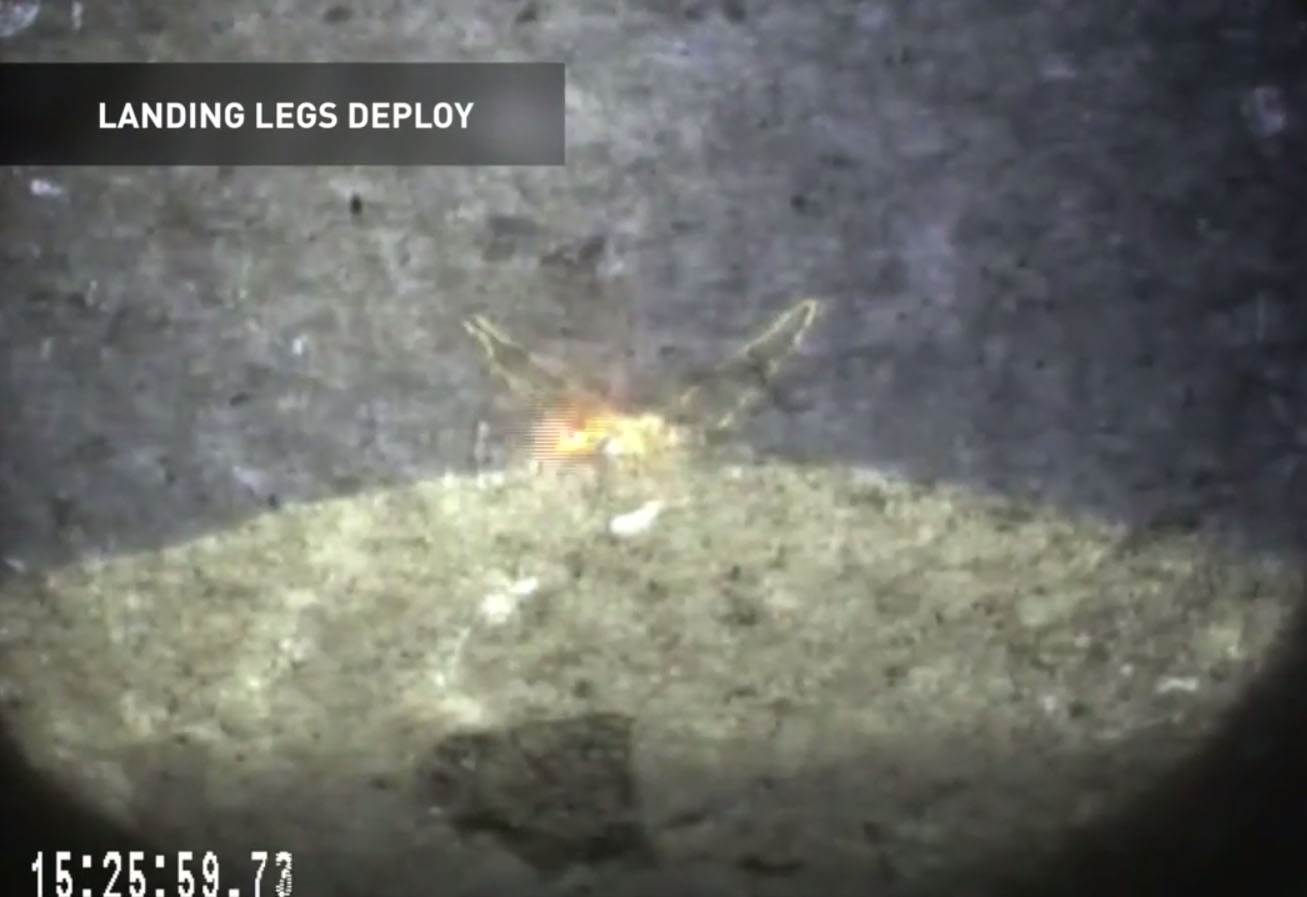Amazing SpaceX Reusable Rocket Test Caught on Video

A stunning new video shows the first stage of SpaceX's Falcon 9 rocket making a soft ocean splashdown as planned after its launch earlier this month.
The spectacular new SpaceX video, which the company released today (July 22), reveals the rocket stage returning to Earth in a controlled fashion after helping launch six commercial satellites from Florida on July 14. Many key moments are plainly visible, including the deployment of the stage's landing legs and its submersion in the Atlantic Ocean.
Even though the booster didn't survive the landing entirely intact, SpaceX considers the reusability test a big success. [The Rockets and Spaceships of SpaceX (Photos)]
"This test confirms that the Falcon 9 booster is able consistently to reenter from space at hypersonic velocity, restart main engines twice, deploy landing legs and touch down at near zero velocity," SpaceX representatives wrote in an update today about the video, which was recorded by the stage's onboard camera.
Developing fully and rapidly reusable rockets is a key priority for California-based SpaceX and Elon Musk, the company's billionaire founder and CEO. Musk has said reusable launch systems could slash the cost of spaceflight by a factor of 100, potentially making Mars colonies and other lofty goals economically feasible.
The company has therefore put a lot of time and effort into testing reusable rockets. Over the past few years, for example, SpaceX conducted increasingly complicated flights of its prototype Grasshopper rocket from a facility in Texas. And the company has now attempted three first-stage returns during Falcon 9 launches.
The first of these Falcon 9 attempts, which came in September 2013, was a partial success. Engineers managed to re-light the first stage's engines twice, but it ultimately hit the water hard. The second test, which occurred in April of this year during the launch of SpaceX's Dragon cargo capsule to the International Space Station for NASA, was a substantial improvement; the Falcon 9 stage made a soft landing, though rough seas broke it apart before a recovery boat could get to the site, SpaceX representatives said.
Breaking space news, the latest updates on rocket launches, skywatching events and more!
SpaceX will try another first-stage ocean splashdown on Flight 13 of the Falcon 9, company representatives said. That flight — another cargo mission to the orbiting lab for NASA — is currently scheduled for Sept. 12. The next two Falcon 9 missions after that will feature attempts to bring the first stage down to Earth softly on land.
"At this point, we are highly confident of being able to land successfully on a floating launch pad or back at the launch site and refly the rocket with no required refurbishment," SpaceX representatives wrote in today's update.
Follow Mike Wall on Twitter @michaeldwall and Google+. Follow us @Spacedotcom, Facebook or Google+. Originally published on Space.com.

Michael Wall is a Senior Space Writer with Space.com and joined the team in 2010. He primarily covers exoplanets, spaceflight and military space, but has been known to dabble in the space art beat. His book about the search for alien life, "Out There," was published on Nov. 13, 2018. Before becoming a science writer, Michael worked as a herpetologist and wildlife biologist. He has a Ph.D. in evolutionary biology from the University of Sydney, Australia, a bachelor's degree from the University of Arizona, and a graduate certificate in science writing from the University of California, Santa Cruz. To find out what his latest project is, you can follow Michael on Twitter.
